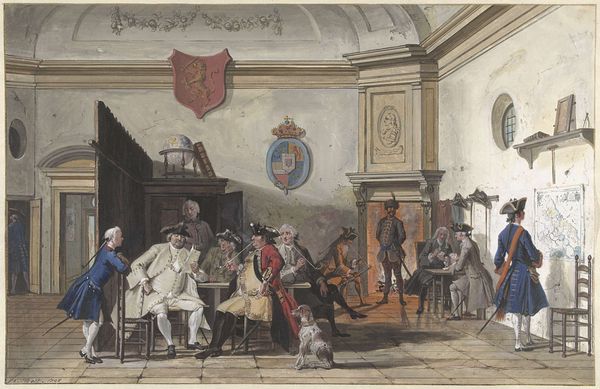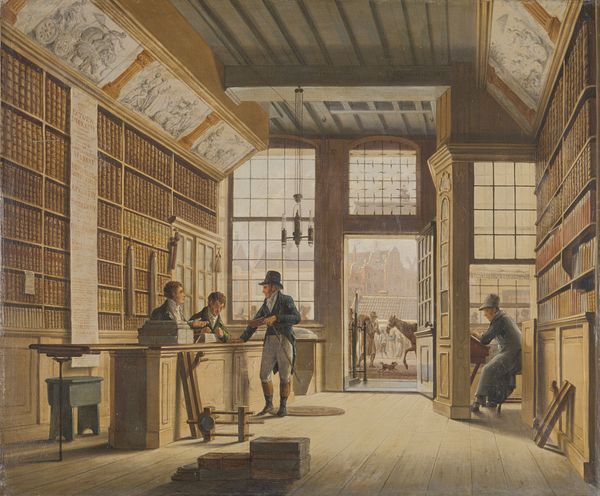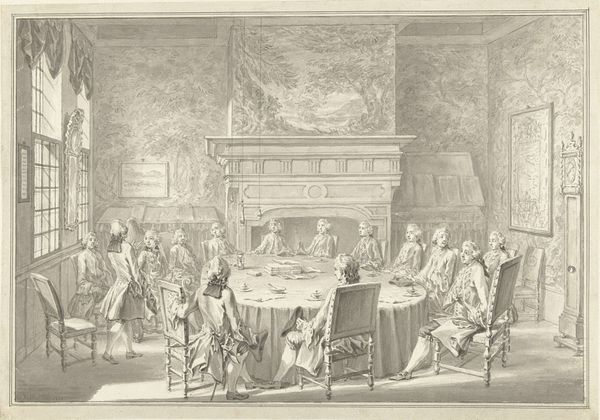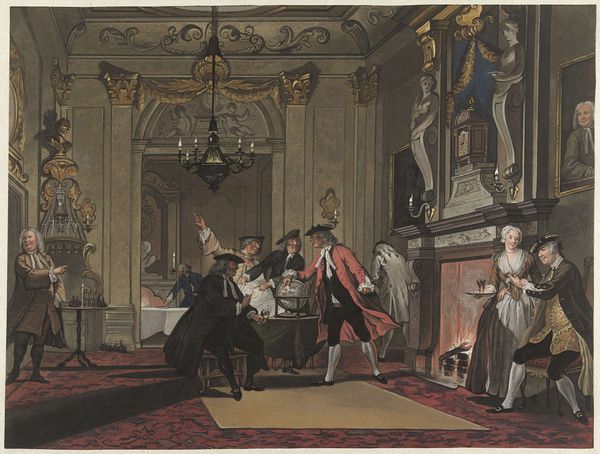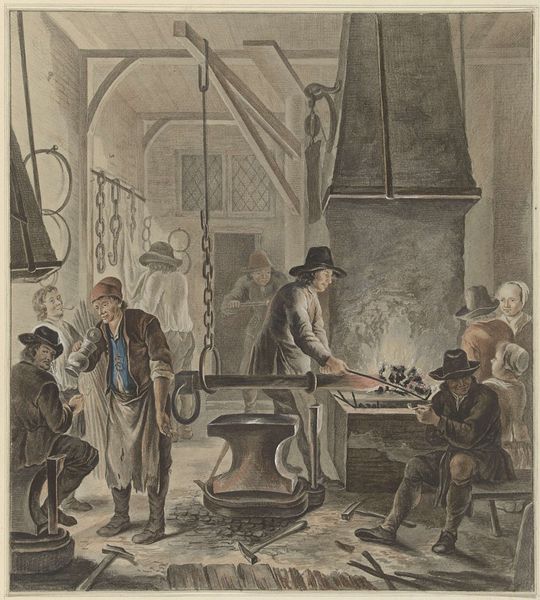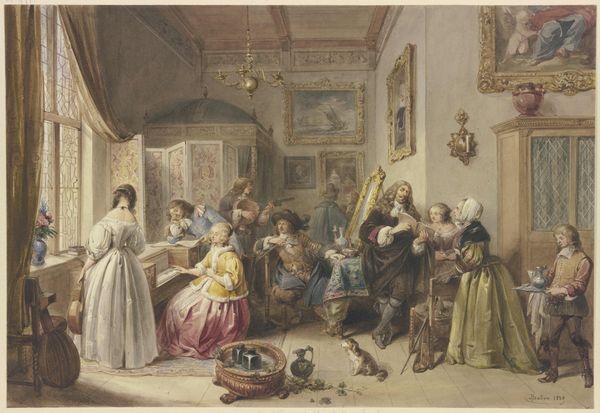
drawing, print, gouache
portrait
gouache
drawing
gouache
group-portraits
genre-painting
rococo
Dimensions: sheet: 11 1/2 x 12 3/8 in. (29.2 x 31.4 cm)
Copyright: Public Domain
Curator: Let’s turn our attention to "Guardroom Scene," a gouache by Cornelis Troost, created in 1744. It's quite a detailed piece of genre painting, currently housed here at The Met. Editor: It strikes me immediately how stage-like it feels. The composition directs our eyes from the brightly lit fire to the huddle of figures around the table—it is balanced and full of soft light. Curator: Troost, who worked primarily in the Netherlands, was deeply engaged with representing the social mores of his time. These "guardroom scenes" became popular as they served as a satirical commentary on military life. Who were these soldiers? Were they truly protectors or engaging in frivolity? Editor: I notice the symmetry. The figures around the table, and the objects scattered across the floor—the composition adheres to strict formal conventions that are only slightly disrupted by the characters' actions and reactions. It also displays such attention to detail in rendering each object, highlighting the artist’s mastery of his materials. Curator: Indeed. But also consider the larger political backdrop. The 18th century was an era of complex power dynamics and rising mercantile interests. Genre painting, such as this, offers insights into class, social expectations, and critiques thereof. Observe how class differences play out even within this somewhat confined space of male camaraderie. It suggests questions around privilege and how status is performed. Editor: I see what you mean; the arrangement subtly emphasizes disparities through gesture, expression and detail, but I can't help coming back to the spatial arrangements; everything is precisely where it should be, so there is stability and harmony amid the scene’s inherent chaos. Curator: Troost's art wasn’t just a decorative depiction, it was often a critical portrayal of a society grappling with evolving notions of governance and citizenship. So, in some ways, this frozen tableau encapsulates many ongoing social dynamics. Editor: Reflecting on Troost’s artistry, what really resonates is the controlled chaos captured through meticulously structured composition—the dynamic yet balanced image serves as more than just documentation, but as art itself. Curator: Precisely, its place here underscores that art doesn’t exist in isolation. It holds dialogue with both its own time and continues relevance today.
Comments
No comments
Be the first to comment and join the conversation on the ultimate creative platform.

